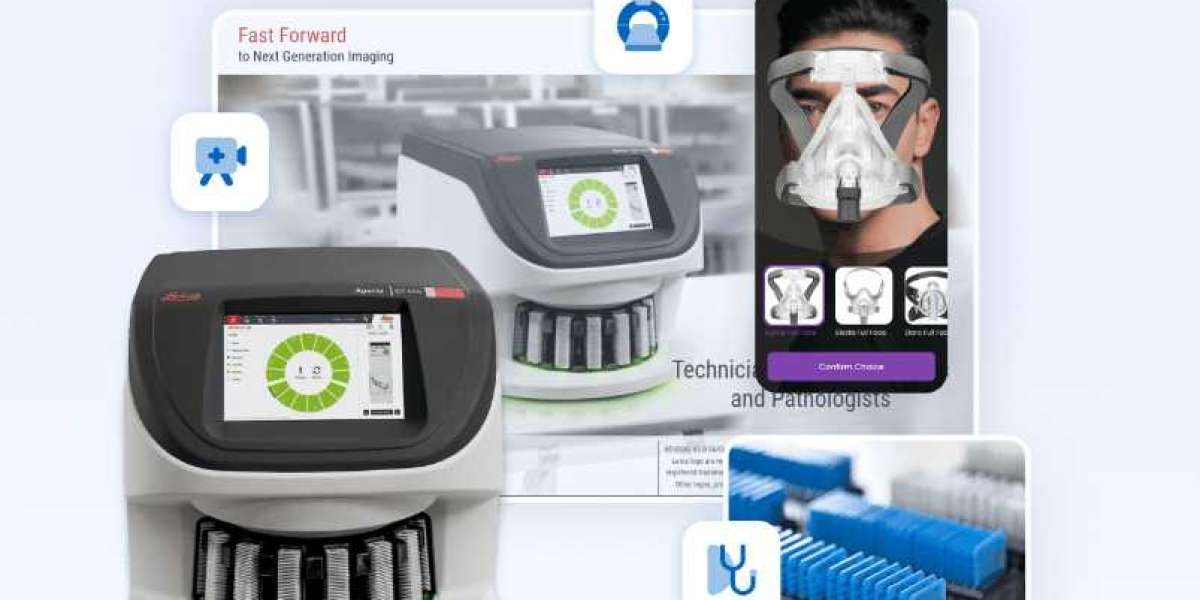In an era marked by rapid technological advancements, the healthcare industry continually seeks innovations that improve patient outcomes, enhance operational efficiency, and ensure regulatory compliance. Central to this evolution is medical device software, which plays a crucial role in diagnosing, monitoring, and treating patients. However, with the complexity of medical device software and the high stakes involved, ensuring its quality and reliability is paramount. One effective approach to achieving this is through automated testing. This article explores the benefits of implementing automated testing in medical device software development and offers practical strategies for successful integration.
Understanding Automated Testing
Automated testing refers to the use of specialized software tools to execute tests on the software applications automatically. Unlike manual testing, which relies on human testers to perform test cases, automated testing leverages scripts and software to carry out tests, often with greater speed and accuracy. This approach is especially beneficial in the medical device industry, where software must adhere to stringent regulatory standards and demonstrate unwavering reliability.
The Importance of Testing in Medical Device Software
Medical device software is unique due to its critical role in patient health and safety. Faulty software can lead to misdiagnosis, ineffective treatment, or even catastrophic outcomes. Therefore, rigorous testing is essential to validate the software’s functionality, security, and performance. Additionally, regulatory bodies, such as the U.S. Food and Drug Administration (FDA) and the European Medicines Agency (EMA), require comprehensive testing documentation to ensure compliance with safety standards.
Benefits of Automated Testing in Medical Device Software Development
1. Increased Efficiency
Automated testing significantly reduces the time and effort required for testing activities. With the ability to execute multiple test cases simultaneously, teams can identify defects faster, allowing for quicker iterations and more efficient use of resources. This efficiency is critical in a field where time-to-market can be a decisive factor for companies.
2. Enhanced Accuracy
Human testers are susceptible to errors, particularly in repetitive tasks. Automated testing eliminates the risk of human error, ensuring that tests are executed consistently and reliably. This accuracy is vital in medical device software, where even minor bugs can have serious consequences.
3. Cost Savings
Although implementing automated testing may require an initial investment in tools and training, it can lead to significant cost savings in the long run. By reducing the time spent on manual testing and minimizing the risks associated with software defects, companies can avoid costly recalls, legal issues, and reputational damage.
4. Improved Test Coverage
Automated testing allows for extensive test coverage across various aspects of the software. This includes functional testing, performance testing, security testing, and regression testing. The ability to run comprehensive test suites ensures that all critical features are thoroughly validated, reducing the likelihood of undetected issues.
5. Facilitation of Continuous Integration and Continuous Delivery (CI/CD)
Incorporating automated testing into a CI/CD pipeline streamlines the software development process. Automated tests can be triggered with each code change, providing immediate feedback to developers and facilitating quicker releases. This agility is essential in today’s fast-paced healthcare environment, where updates and improvements must be deployed rapidly to meet evolving needs.
6. Better Regulatory Compliance
Automated testing can help organizations maintain compliance with regulatory requirements by providing detailed documentation and audit trails. Automated test scripts can be stored and managed systematically, ensuring that all testing activities are traceable and reproducible. This documentation is crucial for regulatory submissions and audits.
7. Enhanced Collaboration and Transparency
Automated testing fosters better collaboration among development, testing, and regulatory teams. With clear visibility into the testing process and results, all stakeholders can engage more effectively, leading to improved decision-making and a shared understanding of the software’s quality status.
Strategies for Implementing Automated Testing in Medical Device Software Development
While the benefits of automated testing are clear, successful implementation requires careful planning and execution. Here are some strategies to effectively integrate automated testing into medical device software development:
1. Define Clear Objectives and Scope
Before initiating automated testing, it’s essential to establish clear objectives and define the scope of automation. Determine which aspects of the software will benefit most from automation, such as regression tests, performance tests, or security tests. Align these objectives with the overall goals of the software development project and the regulatory requirements.
2. Choose the Right Tools
Selecting appropriate testing tools is crucial for successful automation. There are numerous automated testing tools available, each with different features and capabilities. Evaluate tools based on factors such as ease of use, integration with existing development environments, support for various testing types, and compatibility with regulatory requirements. Popular tools in the medical device sector include TestComplete, Selenium, and QTP.
3. Develop a Robust Test Strategy
A well-defined test strategy is essential for effective automated testing. This includes creating a comprehensive test plan that outlines the testing process, including test case design, execution, and reporting. Consider adopting a risk-based testing approach to prioritize test cases based on their impact on patient safety and software reliability.
4. Invest in Training and Skill Development
Successful automation requires skilled personnel who understand both the software and the testing process. Invest in training for your development and testing teams to ensure they have the necessary skills to create and maintain automated tests. Encourage collaboration between software engineers and quality assurance (QA) professionals to foster a culture of shared responsibility for software quality.
5. Implement a CI/CD Pipeline
Incorporating automated testing into a CI/CD pipeline is vital for achieving rapid and reliable software releases. Automate the build process, and ensure that automated tests are executed at various stages of the development lifecycle, including code commits, builds, and pre-release validation. This approach enables teams to identify and address issues early in the development process.
6. Prioritize Test Maintenance
Automated tests require regular maintenance to remain effective. As the software evolves, test cases may need to be updated or refactored. Establish a process for regularly reviewing and maintaining automated tests to ensure they remain relevant and reliable. This practice will help prevent test failures due to outdated or irrelevant test cases.
7. Foster a Culture of Quality
Creating a culture of quality within the organization is essential for the success of automated testing. Encourage all team members to take ownership of software quality, from developers to testers to management. Promote open communication about quality issues and celebrate successes to reinforce the importance of delivering high-quality medical device software.
8. Monitor and Measure Test Results
Implement robust monitoring and reporting mechanisms to evaluate the effectiveness of automated testing. Analyze test results to identify trends, recurring issues, and areas for improvement. Use these insights to refine the testing process and enhance overall software quality.
9. Collaborate with Regulatory Bodies
Engaging with regulatory bodies early in the development process can help ensure that your automated testing practices align with industry standards. Seek feedback on your testing strategies and documentation to identify potential compliance gaps and ensure that you meet regulatory requirements.
10. Conduct Regular Audits and Reviews
Conduct regular audits of your automated testing practices to ensure compliance with internal standards and regulatory requirements. Review test documentation, processes, and results to identify areas for improvement and maintain accountability within the organization.
Challenges of Automated Testing in Medical Device Software Development
While automated testing offers numerous benefits, it is not without its challenges. Understanding these challenges can help organizations prepare and adapt their strategies accordingly.
1. Initial Setup Costs
Implementing automated testing requires an initial investment in tools, infrastructure, and training. For small organizations or startups, these costs may be prohibitive. However, the long-term benefits often outweigh the initial expenditures.
2. Complexity of Medical Device Software
Medical device software is often highly complex, involving various hardware and software interactions. This complexity can make it challenging to design effective automated tests. Organizations must invest time and effort in understanding the software architecture to develop appropriate test cases.
3. Regulatory Compliance
Maintaining compliance with regulatory requirements can be challenging, particularly with automated testing. Organizations must ensure that automated tests are adequately documented and that the testing process aligns with industry standards. Failing to meet regulatory requirements can result in significant penalties or delays in product approval.
4. Resistance to Change
Introducing automated testing may face resistance from team members accustomed to manual testing methods. It is essential to communicate the benefits of automation and provide support and training to ease the transition.
5. Continuous Maintenance Requirements
Automated tests require ongoing maintenance to remain relevant and effective. As the software evolves, tests must be updated to reflect changes in functionality. This maintenance can be resource-intensive, particularly in fast-paced development environments.
Conclusion
Incorporating automated testing into medical device software development offers numerous benefits, including increased efficiency, enhanced accuracy, and improved regulatory compliance. By implementing robust strategies and addressing potential challenges, organizations can effectively leverage automated testing to ensure the quality and reliability of their software. As the healthcare industry continues to evolve, embracing automation will be crucial in delivering safe, effective, and innovative medical devices that meet the needs of patients and healthcare providers alike.
In this fast-paced and highly regulated environment, the commitment to quality through automated testing will not only enhance product development but also foster trust in medical technology—a cornerstone of successful healthcare delivery.








